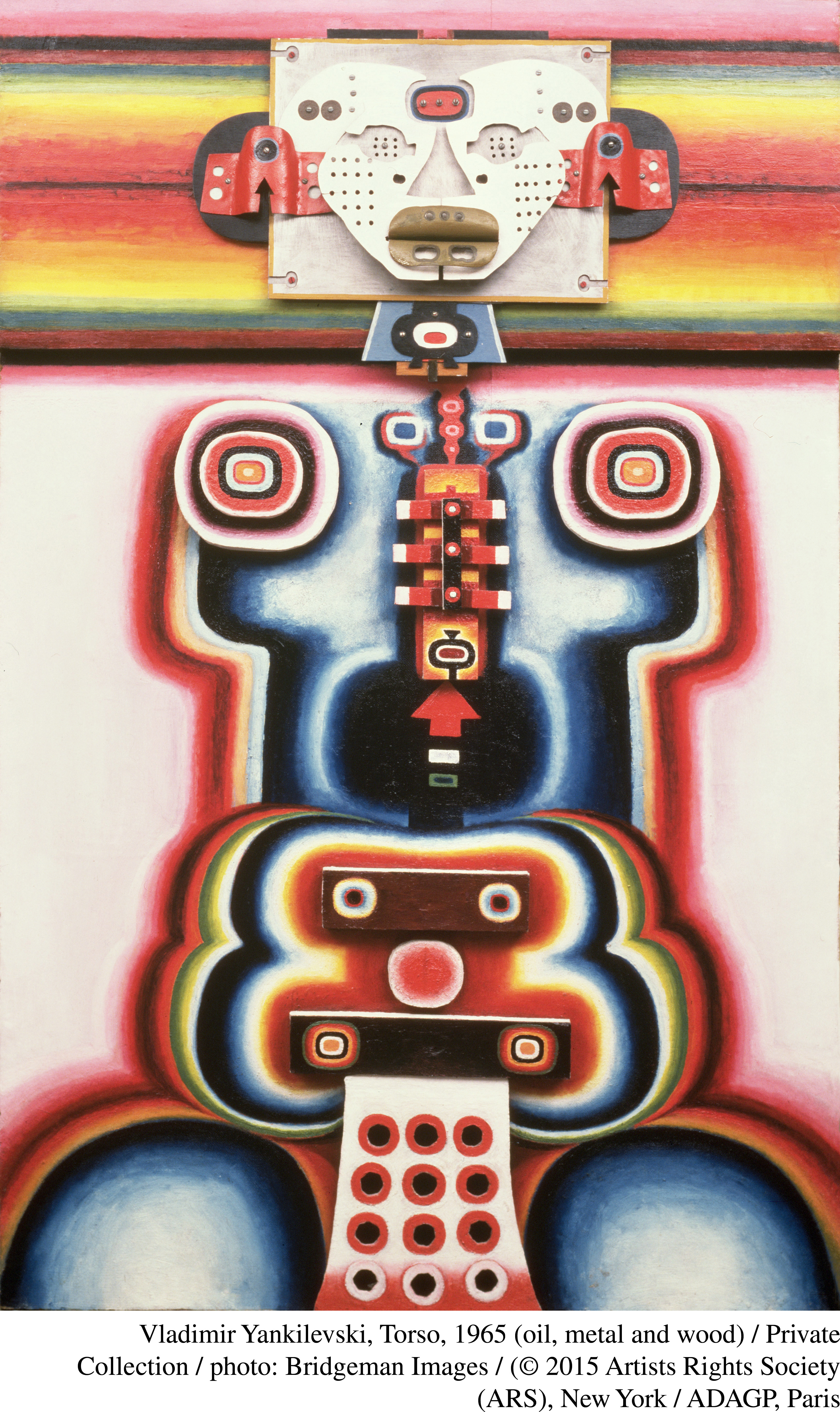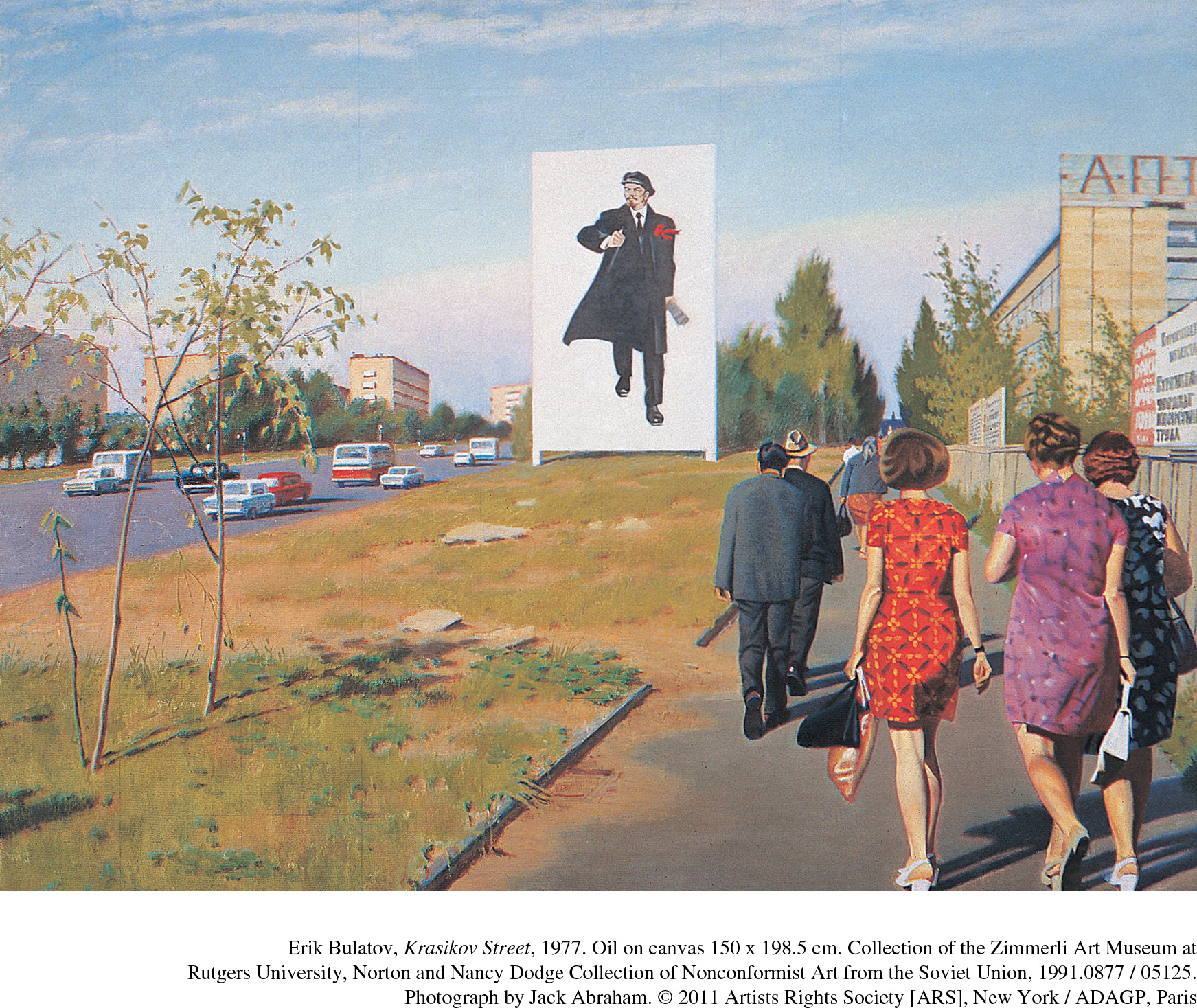Seeing History: Critiquing the Soviet System: Dissident Art in the 1960s and 1970s
Printed Page 970
Important EventsArtists, writers, composers, and performers in the USSR were supposed to follow Communist Party directives, creating uplifting works that spread Communist ideals, despite the political repression and economic hardships that plagued the system. Numerous dissident artists sought to undermine the Communist message and criticize the regime through their work, thus helping to prepare the ground for a full-scale revolt against the Soviet system in the late 1980s. The Soviet government persecuted these artists and their families and often destroyed subversive works that were displayed in public. Yet dissident artists bravely forged ahead, displaying their art and even selling it to foreign dealers to smuggle out of the country. Dissident artists employed a range of techniques, both subtle and explicit, to critique the Soviet regime.
Vladimir Yankilevsky’s Torso (1965) showed a rejection of official art’s happy workers, instead showing a body-machine. This was both an ideological rejection and a stylistic one: Soviet officials disapproved of abstract art as a sign of Western decadence. The U.S. bloc, it was said, had rejected classical standards of beauty in favor of ugly cubist and other distorted forms of reality. What other aspects of the image Torso might have offended those monitoring Soviet art?

In his work The General, Boris Orlov used sculpture to lampoon openly one of the mainstays of Soviet society during the cold war. As the heroes of World War II and protectors of communism, generals were officially revered, parading on Soviet holidays and at commemorative events. Their uniforms feature oak and laurel leaves—common symbols of strength and victory. What are the general’s main features as portrayed by Orlov? What adjectives would you use to describe this work? How would you characterize the tone and purpose of Orlov’s depiction?

Question to Consider
As you reflect on these two works of art, what in your opinion would have made them dangerous to the survival of Soviet communism?